|
   |
|
Page 5 |
Newsletter 142 August 2023 © Hampshire Mills Group |
|
Felin Geri, Cwm Cou
Ruth Andrews
Photos by Keith and Ruth Andrews |
|
When Edwin Course took a group of industrial
archaeologists to Mid-Wales in 1989 they visited
this 16th century watermill near Newcastle Emlyn
which was producing semolina for the adjacent
bakery. Edwin’s notes mention occupied pigsties,
geese, and other animals. Keith photographed two
chained hawks, but not the mill! There was also a
19th century water-powered sawmill in a shed.
|
|

|
According to the Coflein description (the
online database for the National Monuments Record of
Wales, NMRW,
https://coflein.gov.uk/en/
) the mill was altered or rebuilt in 1805 and
repaired in 1879. It was restored from dereliction
in 1972-5 and opened to the public for a number of
years until 1991. It is now part of a country park
and a centre for discogolf, with a heavy emphasis on
its use as a catering venue for events such as
weddings.
In 2010 the corrugated iron roof of the sawmill shed
collapsed under the weight of snow, making it much
easier to photograph this feature. |
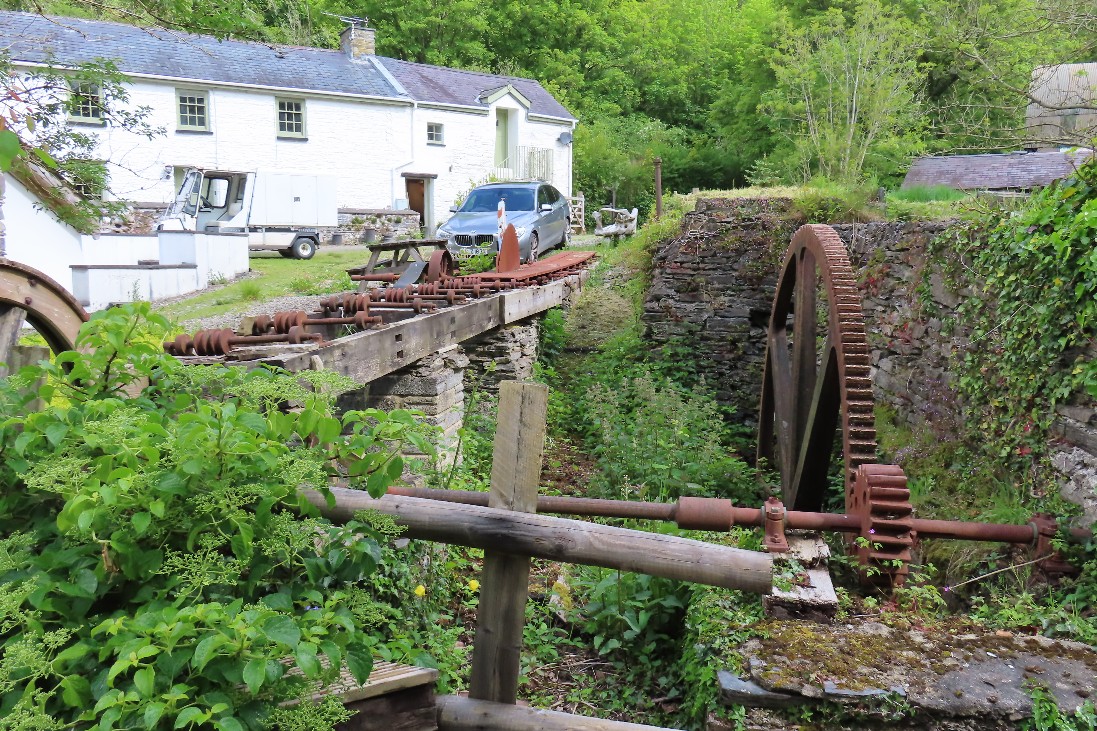 |
 |
|
It had an overshot waterwheel dated 1880 which drove
the sawmill through a pit wheel and pinon and then a
belt drive. This sawmill wheel, on the right in the
picture, is in much better condition, and completely
separate from the similarly-sized backshot
waterwheel, on the left, for the corn mill, which is
said to be dated to 1872.
(The Coflein listing NPRN 406737 describes them both
as overshot, but this is clearly wrong.) They have
two adjacent water supplies, each controlled by its
own sluice.
Inside the mill there is a substantial pit wheel
which connects via a layshaft to two vertical gears
that mesh with the stone nuts for the two pairs of
millstones on the floor above. There is also a belt
pulley on this shaft which worked a dresser (wire
machine) and the sack hoist, so there was no need
for an upright shaft.
|
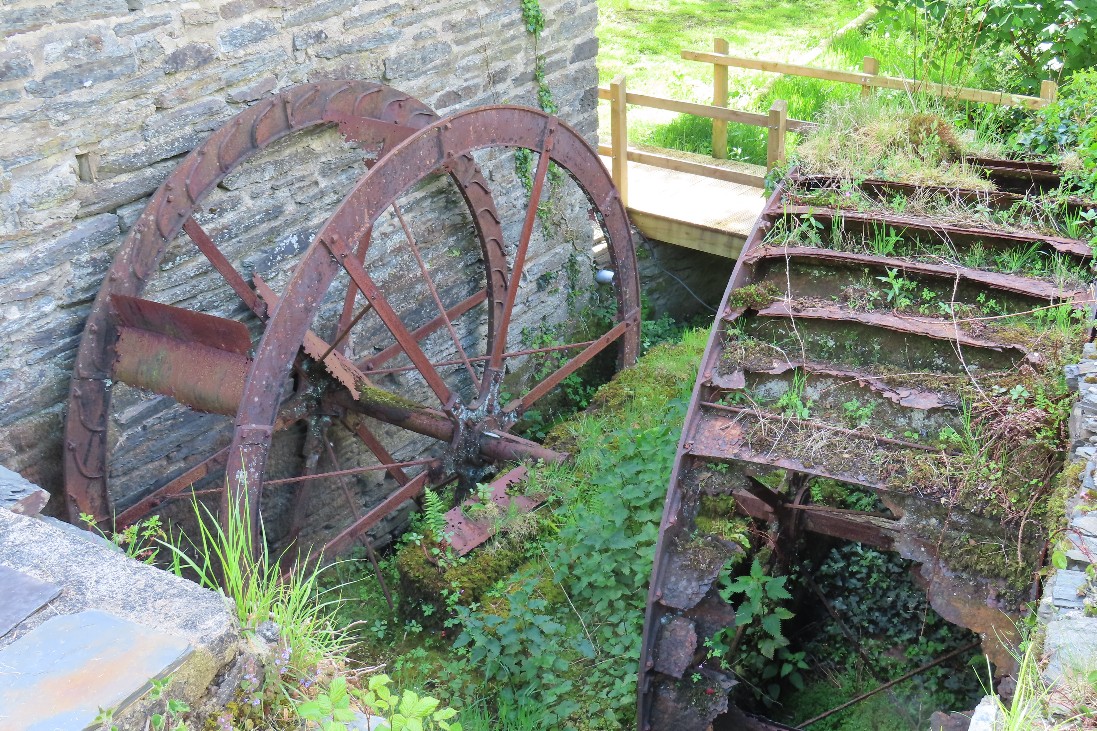 |
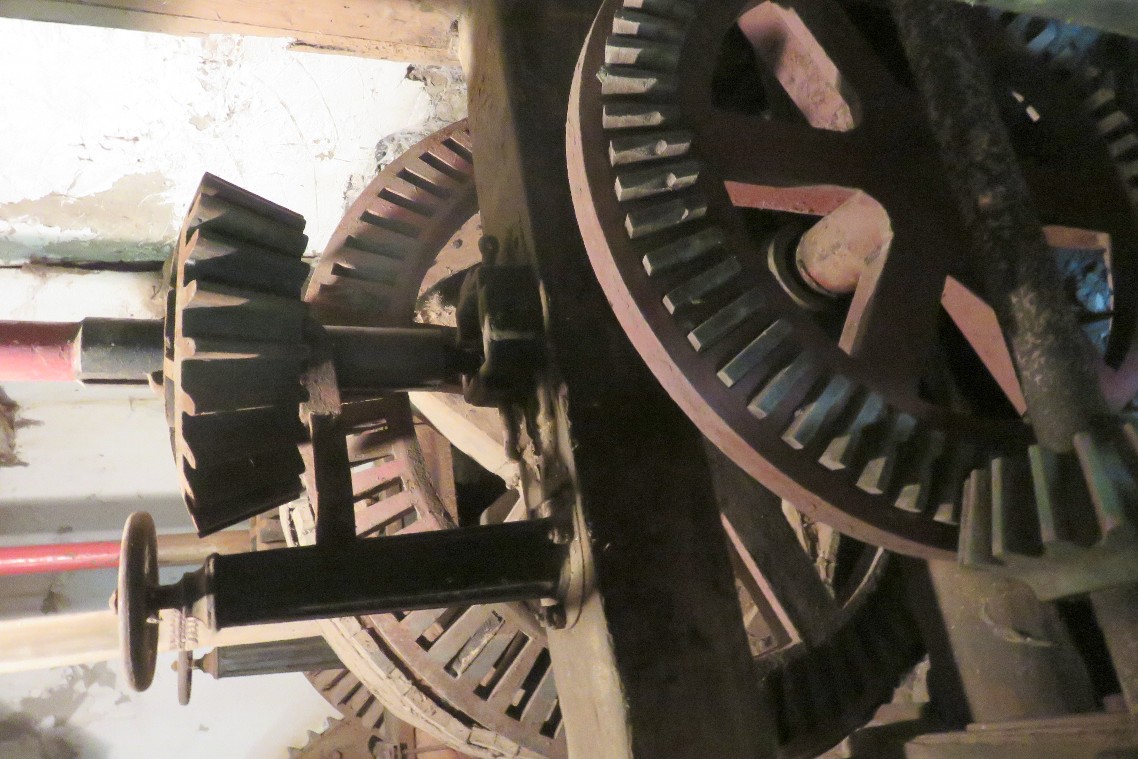 |
 |
|
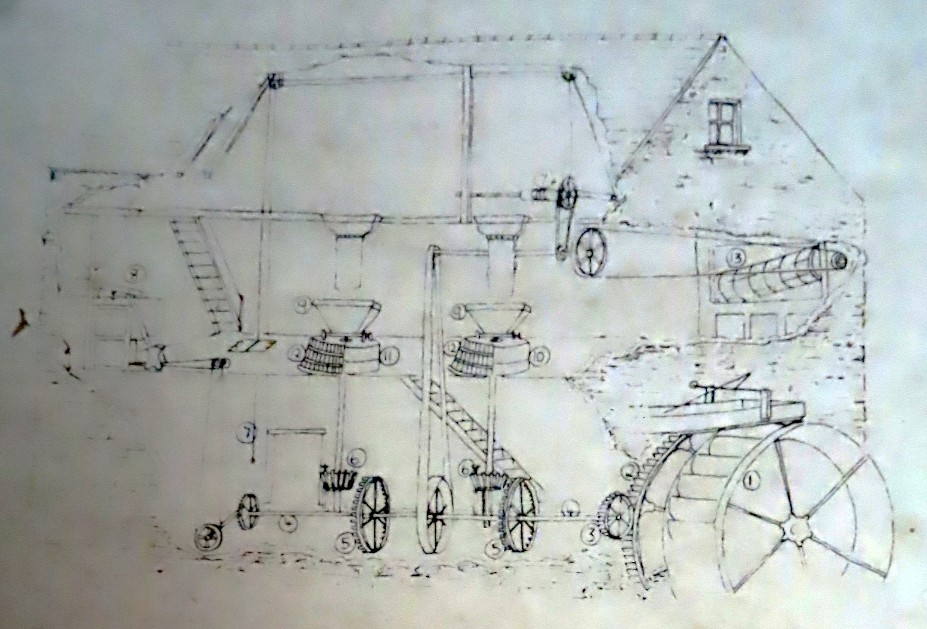
This fading diagram on the wall explains the
situation. In the picture below left you can see
one stone nut and its spur wheel, immediately behind
which is the pulley for the belt drive to the sack
hoist and the dresser. In the foreground is the
drive to a smutter and separating machine that you
can just make out on the left of the diagram.
The current owner, Alan, was happy to show us round,
but it is not clear if the mill is generally open to
visitors. It is essentially watertight and secure
but it needs a makeover if its unusual features are
to be appreciated in the future. The mill and all
its contents are said to be listed.
Other Welsh Corn Mills that we
saw:
|
|
Cenarth Falls, as seen on the front cover, is
a much photographed beauty spot, but how many people
notice the 17th century flour mill on the bank of
the River Teifi?
It has an undershot timber and iron waterwheel which
has recently had new floats fitted. SPAB says it
drives two pairs of millstones, one for barley, the
other for oats. It last worked commercially in
1964.
The mill is included in the National Coracle Centre,
and is supposed to open from Easter to October, but
was closed when we visited in May.
|
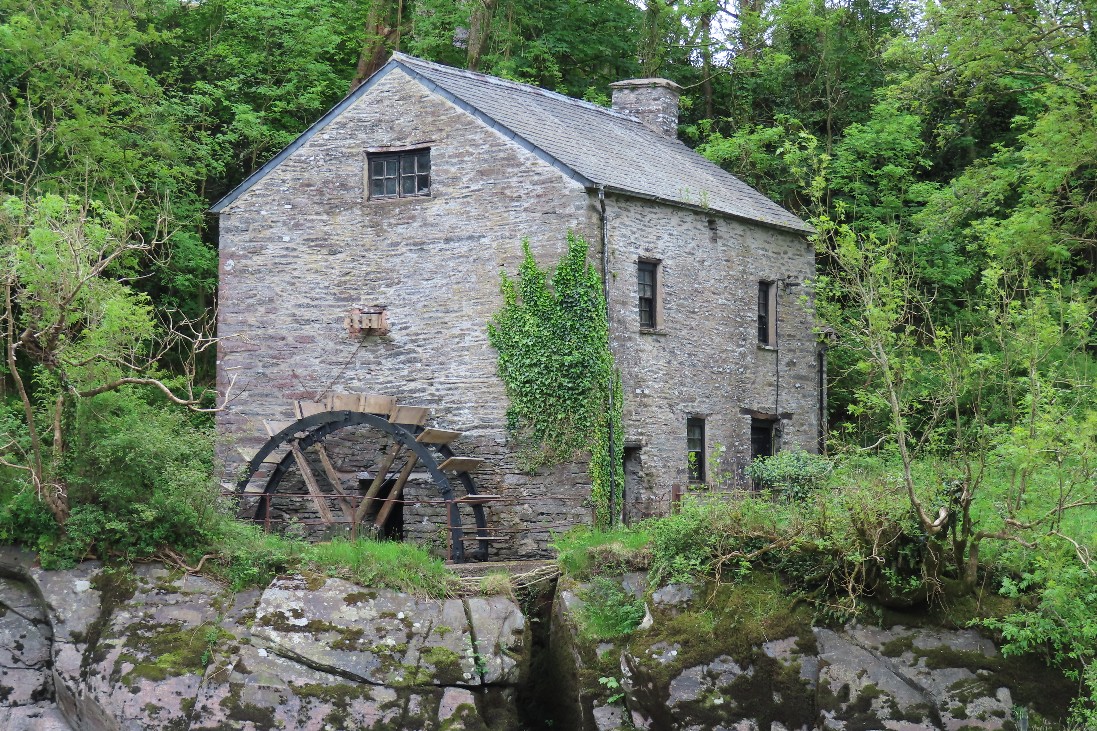 |
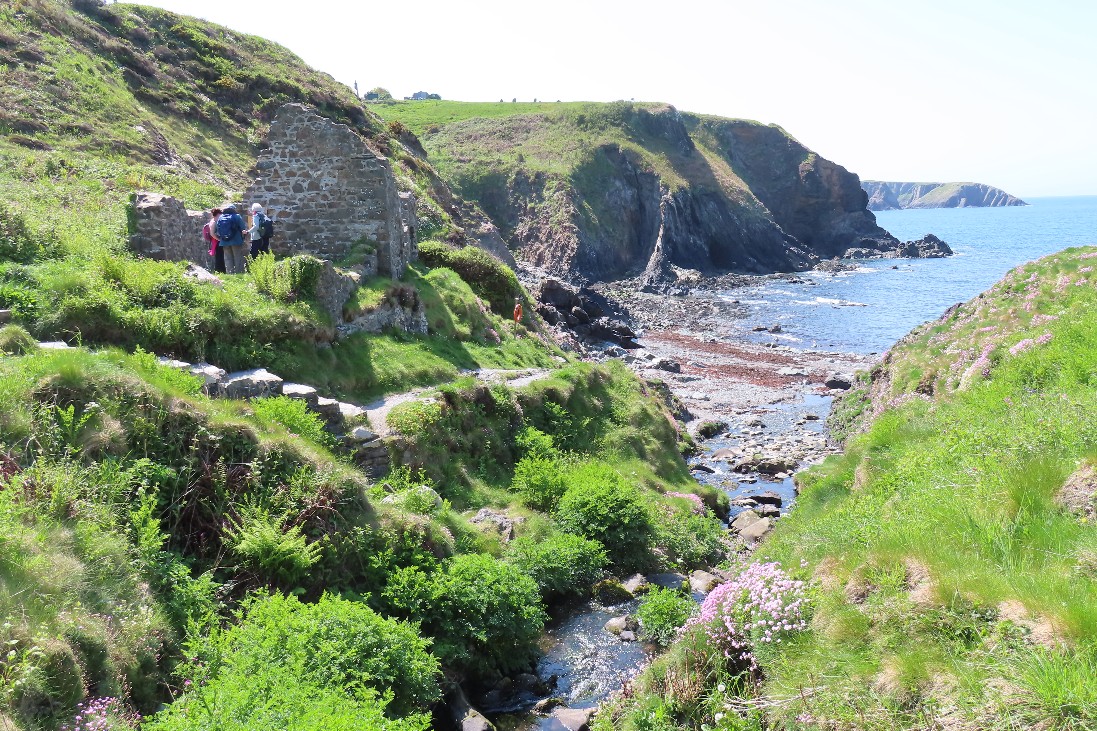 |
Melin Trefin
is a ruin in a splendid location at Aber Draw
containing a pair of millstones.
During the eighteenth century there were dozens of
mills like this one dotted around the Pembrokeshire
countryside.
According to Coflein, there was an overshot wheel
on the western gable. The mill is believed to have
ceased working by 1918. |
|
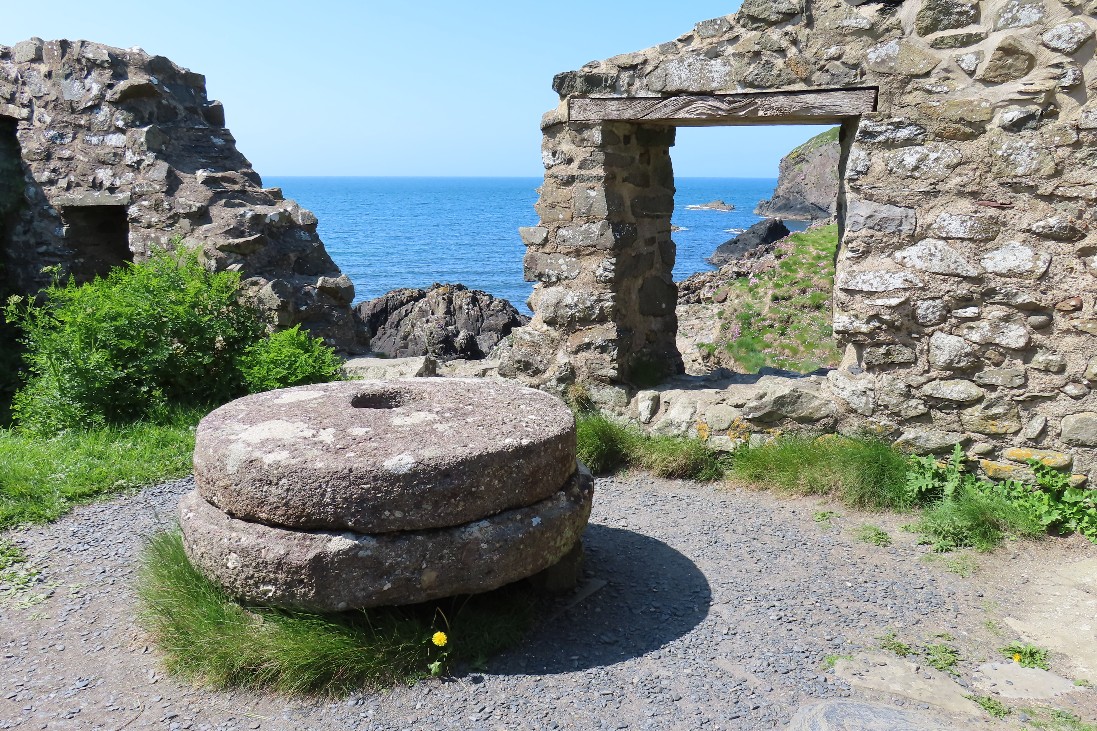 |
|
|
